Oculus VR Reveals Retail Price of Its Virtual Reality Headset: $599
by Anton Shilov on January 7, 2016 1:03 AM EST- Posted in
- VR
- GPUs
- Oculus Rift
- CES 2016
- Oculus

Oculus VR on Wednesday revealed the price of its Oculus Rift virtual reality headset as well as its launch date. The price of the VR hardware appears to be considerably higher than expected by gamers and industry analyst. The developer claims that the high price is conditioned by high costs and the use of custom hardware. However, such price point may slowdown adoption of virtual reality technologies by the masses.
The Oculus Rift bundle includes the VR headset, an Xbox One gamepad, a sensor, the Oculus Remote controller as well as EVE: Valkyrie and Lucky's Tale VR games. The initial bundle will not include the Oculus Touch controllers, which were recently delayed to the second half of the year. The Oculus Rift virtual reality headset is available for pre-order for $599 on the company’s web-site and will ship starting March 28, 2016, to 20 countries. Select retailers will also sell Oculus Rift hardware in April. In addition, makers of gaming PCs plan to offer Oculus Ready PCs with the headset next month starting at $1499.
Back in early October, 2015, Palmer Luckey, the founder of Oculus VR, said in an interview that the price of one Oculus Rift headset was in the “$350 ballpark”, but it was “going to cost more than that”. As it appears, the virtual reality head mounted display (HMD) costs nearly two times more than that. The $599 price-point is a yet another indicator that the first-generation VR headsets are expensive to make in general. However, that price is too high for the mass market and for many gamers, believes Jon Peddie, the head of Jon Peddie Research, which tracks sales of graphics adapters and PC gaming hardware.
A Lot of Custom Hardware
While the virtual reality HMD is available for pre-order now, Oculus VR still has to confirm its final technical specifications. Based on what the company revealed about six months ago, the Oculus Rift uses two custom AMOLED panels (one per eye) with 2160×1200 resolution and 90 Hz refresh rate (1080×1200 per eye). The AMOLED displays were architected for low persistence, they display each image for about 2 ms in a bid to minimize delays and avoid effects like motion blur, which can cause nausea. The headset also features specially designed adjustable lenses to enable wide field of view. Each headset has integrated headphones and a microphone. Besides, the Oculus Rift sports various sensors, including the company’s own Constellation system based on infrared sensors, which tracks position of the user’s head.
To connect to a PC, the Oculus Rift and devices that accompany it (gamepad, sensor, remote, etc.) use one HDMI 1.3/HDMI 1.4 interconnection, three USB 3.0 interconnections and one USB 2.0 interconnection.
The Oculus Rift virtual reality headset uses a lot of custom components that were designed specifically for this device. For example, the low-persistence AMOLED display panels were co-developed by Oculus and Samsung Electronics. Oculus VR claims that they wanted to make a device that will offer the best virtual reality experience possible today, which is why they tried to avoid any trade-offs or compromises. Due to extensive usage of parts that are not mass-produced today, the cost of each Oculus Rift should be rather high, which is one of the reasons why the headset is priced at $599.
High-End PC Needed
Since the Oculus Rift should run games in 2160×1200 resolution at 90 Hz with minimal latency, it requires a rather powerful personal computer to offer comfortable experience. Oculus VR recommends a PC with a quad-core Intel Core i5-4590 microprocessor (or equivalent), an AMD Radeon R9 290 or NVIDIA GeForce GTX 970 graphics adapter (or equivalent) as well as 8GB of RAM. The company admits that the more powerful your system is, the better experience with Oculus Rift you are going to get.
Developers of graphics processing units have implied multiple times that for the best VR experience a dual-GPU graphics sub-system is required today. For example, AMD plans to align release of its new dual-chip Fiji video card with availability of VR headsets in the second quarter. In a dual-GPU graphics sub-system, each graphics chip renders its own part of the scene for one eye. Such approach doubles performance and lowers latency. However, two GPUs also require a more powerful central processing unit as well as a high-end power supply unit.
For makers of computer hardware the launch of the first VR headset for gamers means a chance to improve sales of their higher-end products. Not only manufacturers of video cards or microprocessors can benefit from availability of the Oculus Rift, but also producers of RAM, solid-state drives and motherboards can take advantage of the headset as enthusiasts begin to build their new systems. Unfortunately, significant investments in hardware may slowdown adoption of virtual reality HMDs by both gamers and the general public.
Oculus VR: 100+ Virtual Reality Games to Be Available in 2016
Oculus VR claims that more than 100 games designed for virtual reality and compatible with the Rift are set to be available by the end of 2016, including “dozens of full-length AAA” games. The company does not reveal a lot of names, but in addition to the titles bundled with the VR headset, the firm mentions Rockband VR by Harmonix, Edge of Nowhere by Insomniac, and The Climb by Crytek.
While over a hundred of titles that support VR is a lot, only a handful of them will actually attract users to the platform. Since $599 is a significant investment for many gamers, there should be several compelling titles, which not only demonstrate the technology itself, but make people want to play.
A Lot of Excitement
There is a lot of excitement about virtual reality technologies not only among gamers, but also among developers of hardware and software. While the technology itself has a lot of potential for video games and beyond, the very first Oculus Rift headset is designed primarily for games. The price of the HMD is high for many gamers, but for general users it is prohibitively expensive. Therefore, sales of the device will likely be rather limited. In fact, even Facebook, the owner of Oculus VR, does not expect to sell a lot of VR headsets this year.
Sales enthusiast-class graphics cards, which cost $399 and higher, total approximately three million units a year, according to Jon Peddie Research. There are many PC gamers nowadays, but only a fraction of them invests thousands of dollars in hardware. Various analysts make different predictions about sales of the first-generation VR gear, some are optimistic and some are pessimistic. For example, according to a report released by Juniper Research several months ago, cumulative sales of VR headsets in their first year of availability (i.e., 2016) will be approximately three million units. There are three major VR devices to be released this year: the Oculus Rift, the Vive from HTC and the PlayStation VR from Sony. It is highly likely that the majority of hardcore enthusiast gamers will buy only one of them. Juniper predicted that cumulative sales of VR headsets will hit around 30 million units by 2020 as hardware and software evolves.
It remains to be seen how many virtual reality head-mounted displays Oculus VR will sell this year. Palmer Luckey said in an interview that the first consumer version of the Oculus Rift was developed to offer great experience and to show potential of the technology to the world. Hopefully, it will deliver to the promise.


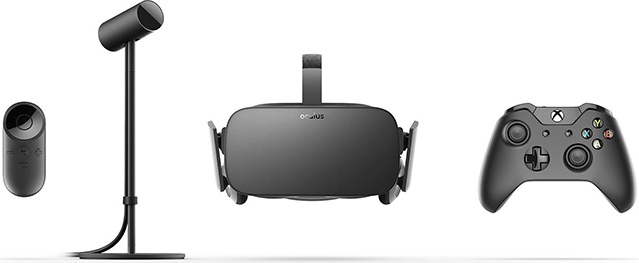
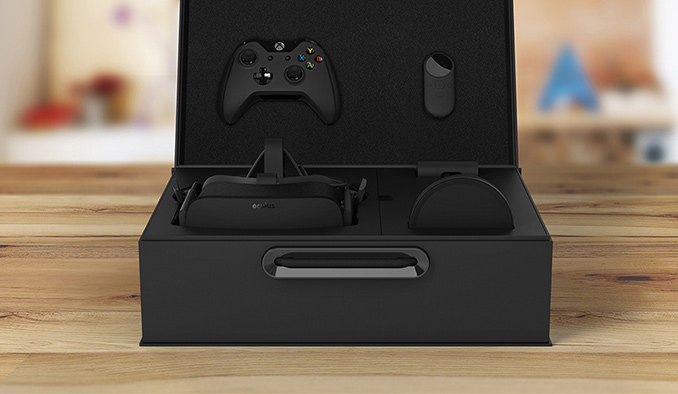
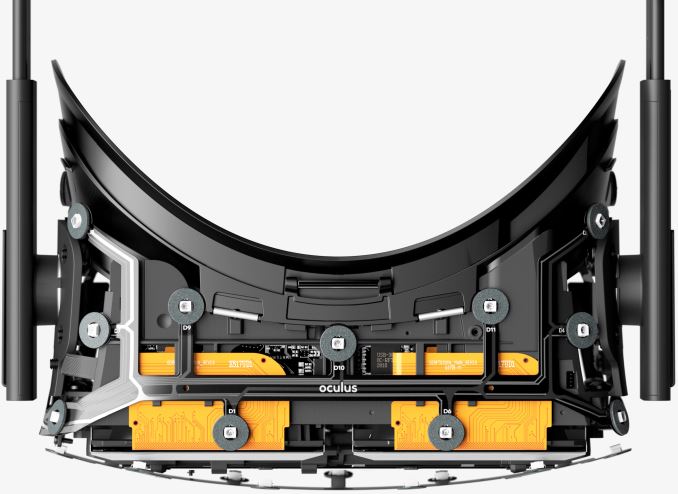
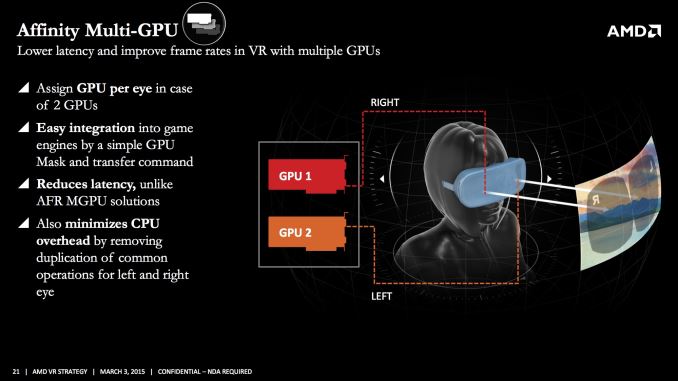

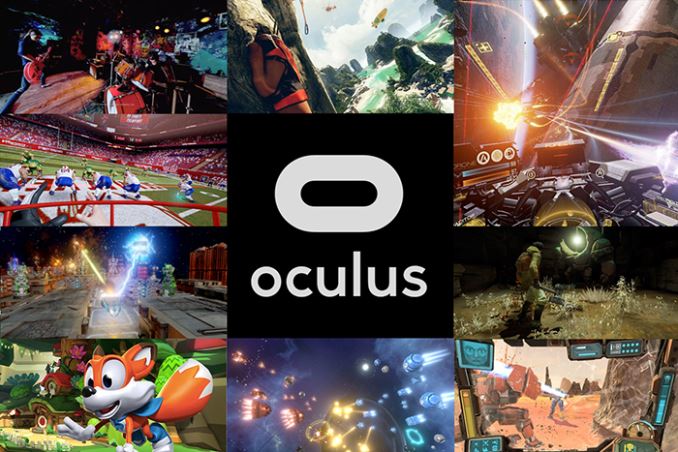
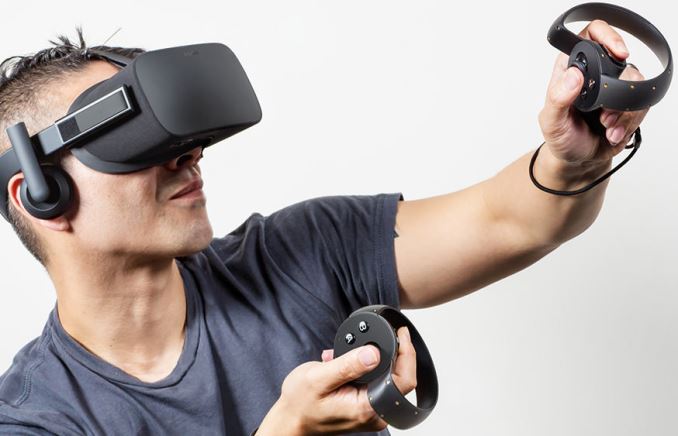








75 Comments
View All Comments
Sttm - Thursday, January 7, 2016 - link
Been seeing a lot of complaining about the price, and I find it so stupid. As A. $599 for a device that serves practically the same role as a TV is if anything cheap. As a good TV typically will run you over a $1000. The other obvious comparison, high end gaming monitor, also costs about $599.Not to mention the fact that to even use it to its full potential you need a $500 GPU. So its not exactly aimed at the $299 console $299 TV crowd here.
pewterrock - Thursday, January 7, 2016 - link
I'd say the majority of the complaining was due to the fact that Oculus claimed it would be in the ballpark of $350. This was a misunderstanding by Palmer Luckey, and he addressed it in his Q&A on reddit today. Not wanting to pay $600 for a peripheral is understandable, but it is still a great value for what you get.nathanddrews - Thursday, January 7, 2016 - link
The 2160x1200@90Hz OLED is very nice, but you can get a very nice G-Sync or FreeSync monitor for that price that can be used all the time for all content.Even if there were a lot of content, it's still very expensive for what it is and it doesn't work well without a powerful computer. It is literally 2X the price that we were led to believe it would cost and even then I thought to myself, "I'll just wait for a sale."
We'll see. 2016 will be the year of "VR reaction" on YouTube and the local news broadcasts and late night talk show circuit. It will get more media coverage than Donald Trump could ever dream of. After the hype settles down in 2017, as Trump is sworn in, I'd be very curious to see how many Rifts/Vives are gathering dust and how many are actually playing quality gaming titles. I hope it's the latter. Is there a comprehensive list somewhere of games coming out?
TEAMSWITCHER - Thursday, January 7, 2016 - link
Trump sworn in? About as likely as Oculus Rift being successful. I know for fact that it's not for me. I can handle lots of actual reality thrills; roller coasters, sky diving, sailing. But strap those virtual reality...vomit goggles...to my head and I feel sick in just a couple of minutes. There is no way in hell I'm gonna separate myself from $600 for that experience.nathanddrews - Thursday, January 7, 2016 - link
My tongue was firmly planted in my cheek when I typed that. I'd like to believe that the Rift being successful is much more likely than Trump being elected, but specifically on topic, the "vomit goggles" seems to depend entirely upon the content being displayed. That's probably the largest hurdle with VR achieving presence is the expectation of movement.Flight sims seem like the perfect fit because you expect to pilot a vehicle in a certain direction while looking around (look at an enemy fighter while flying a different direction). From what I've seen and heard, a lot of people get sick when using a controller or mouse to look around instead of the helmet due to the expectation not matching reality. I think that's why I like the Vive more than the Rift, since it's designed to have your whole body move around a room and interact with the virtual environment, but that's based only upon demos I've seen.
Lastly, some people just will never be comfortable with VR, just like there are some people that can't see 3D movies. People that love it will love it.
haukionkannel - Thursday, January 7, 2016 - link
Well this is new technology at this moment! It will get cheaper. And those that are going to be cheaper in short period have really bad hardware. Low resolution, small viewing are and so on. The are other good products also, but I expect them to be reasonable expensive in the beginning.Normal thing with new stuff in computer technology!
Kepe - Thursday, January 7, 2016 - link
The difference is that the Oculus Rift is a peripheral, it's something that isn't needed to play games. It's like a joystick or a racing wheel. Something that adds to the experience of playing. Not something that is required to play. 600 USD is far too much for a gaming peripheral.You need a fast computer to play games on high settings and that justifies spending more on a good CPU, more RAM and a fast GPU. You also need a monitor. These things are basic requirements for PC gaming, not optional extras like the Rift.
At 600 USD there's no way I'm buying one. I'm really hoping HTC can offer the Vive at a more reasonable price point. It's actually more attractive to me anyways, since it uses better and less CPU intensive tech for locating the headset and controllers in the room, and is backed by Valve so game compatibility will probably be better anyways.
haukionkannel - Thursday, January 7, 2016 - link
Well a computer that can run 2160×1200 resolution at 90 Hz smoothly will cost 3000$ at least...So 600$ is nothing. But yep, at this moment it is only for rich players, but a couple of years and this will become more affordable!
stephenbrooks - Thursday, January 7, 2016 - link
Like many people I'd heard early reports of a $400 ballpark price and would have snapped up the pre-order at that. Now, since I wouldn't get it until March 28th anyway, I'm going to actually wait until April when it's in stock and see what the price does then. It might come down if some of the other headsets get competitive.What I don't want to see is a Rift flop and everyone buying the Gear, so VR gaming on phones takes off but not PCs. That would be terrible.
Yojimbo - Thursday, January 7, 2016 - link
I think you're wrong to compare the Oculus Rift to a joystick or a racing wheel. Firstly, any particular joystick or racing wheel can be substituted in functionality by any other joystick or racing wheel on the market. What can substitute for the Oculus Rift? Secondly, and more importantly, the Oculus Rift's impact on the gaming experience is far larger than a joystick or a racing wheel. It's not just an input device, it allows a completely different level of immersion from what is possible using traditional gaming techniques. Look at it this way: traditional PC gaming is one technology, and it costs, say, $600? dollars to have the hardware to enjoy it reasonably well. (This is just an estimation of the cost of components above a baseline PC) The Oculus Rift is another technology, and it costs $1400? dollars to have the hardware to enjoy it. But that $1400 also is applicable to traditional PC gaming, so to have both only costs $900? more than just having traditional PC gaming. It's a lot of money but considering the change in experience it creates, it is really not out of line for an early adopter experience. For instance, look at the early adopter premium for another technology that didn't create such a large difference in user experience as the Rift creates. DVD players cost $1000+ when first released. VCR players at the time cost less than $200, as far as I can tell (a quick search didn't give me much information). That is an $800 difference in 1997 money, which is almost $1,200 today. The Oculus Rift vs traditional gaming certainly provides a much bigger change in user experience than DVD vs VHS. Admittedly there was probably a larger library of media available for consumption on the DVD at launch as compared to the Rift, but the DVD would have been useful without that availability, whereas one can still participate in traditional gaming without any or much more investment once one has an Oculus Rift setup.The big issue is whether people truly see value in the VR HMD experience or not moreso than the cost premium. I think they were right in trying to make sure that people would be happy with the experience at the expense of extra cost, rather than make something that costs less but doesn't really satisfy people.